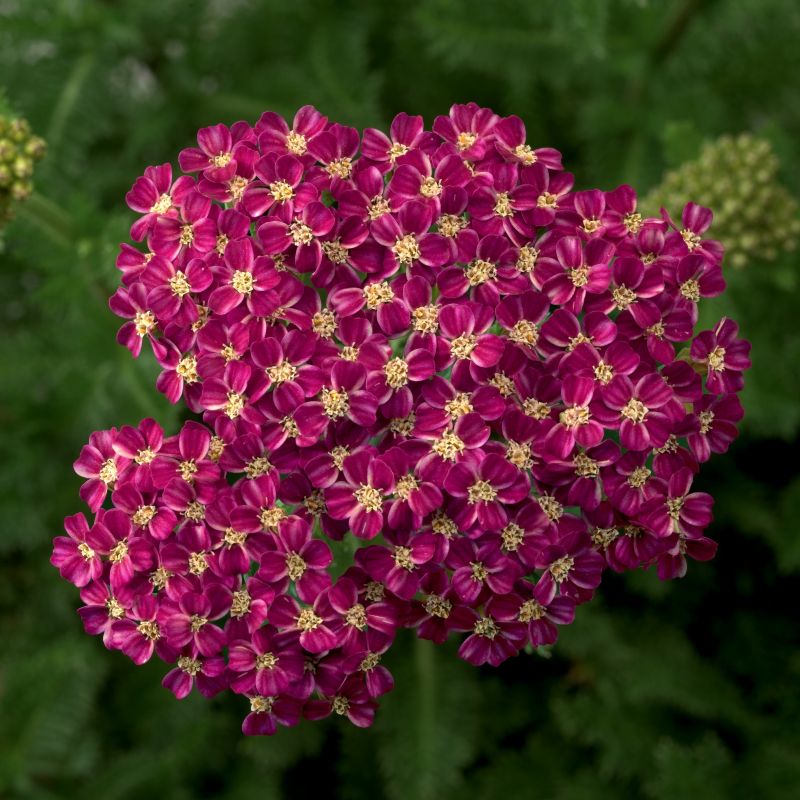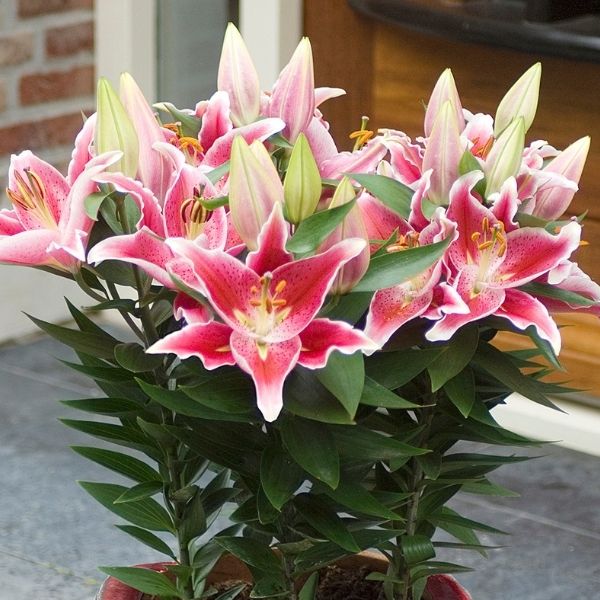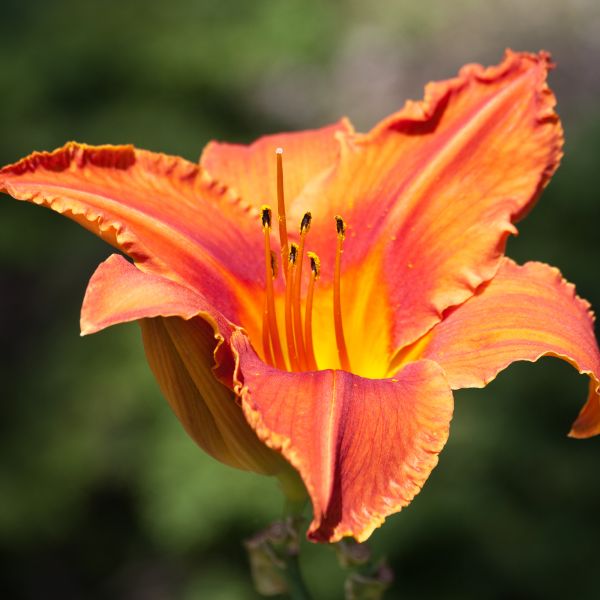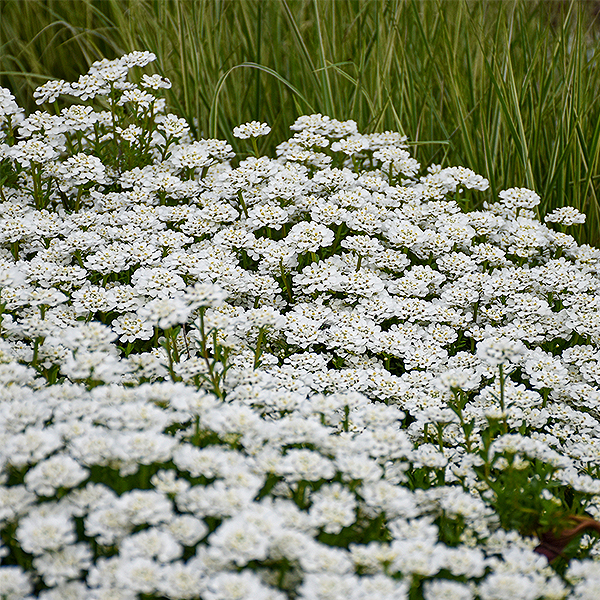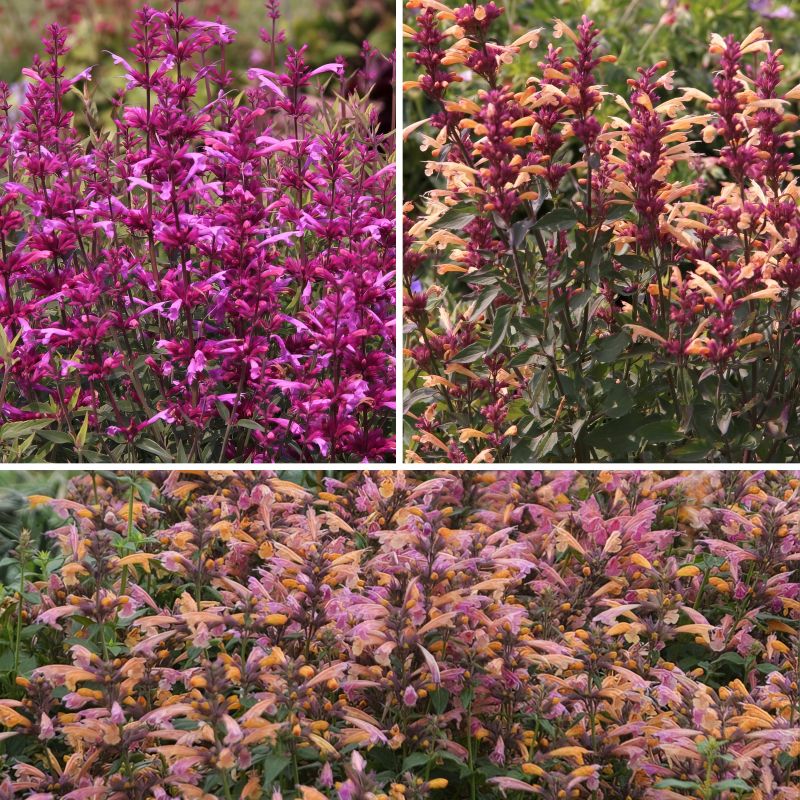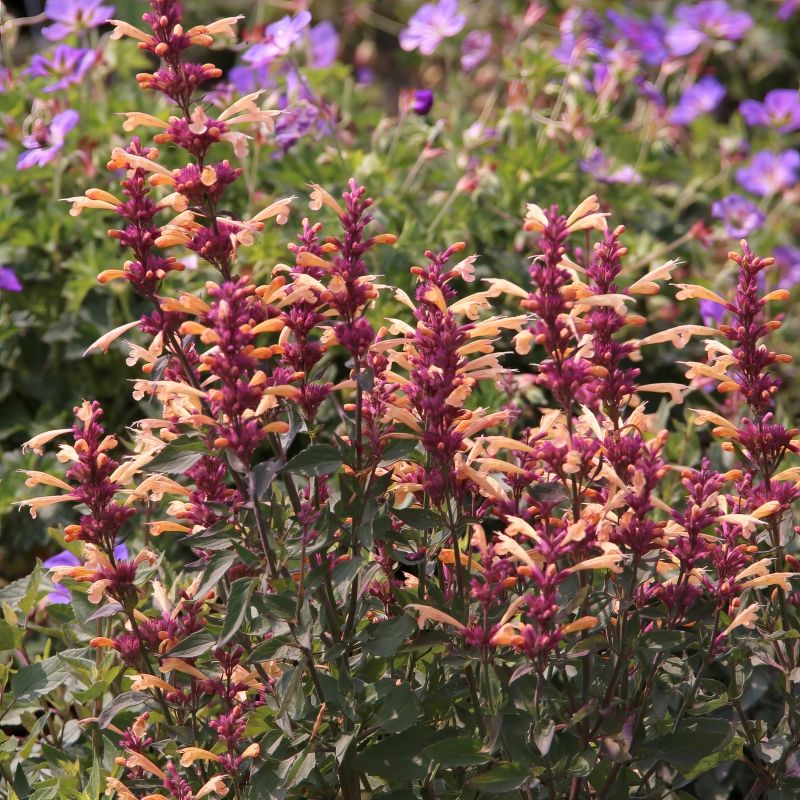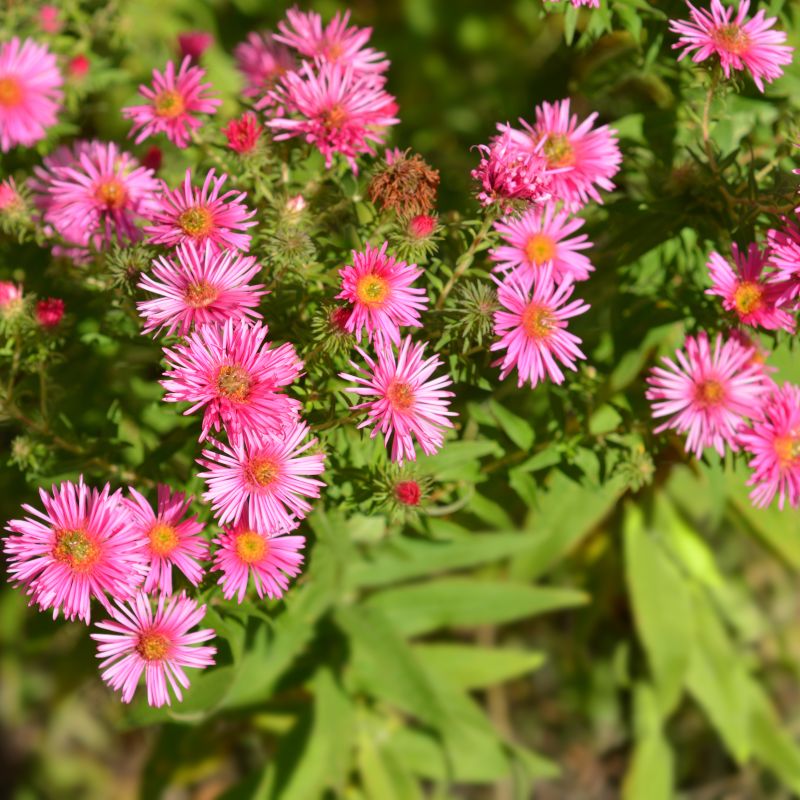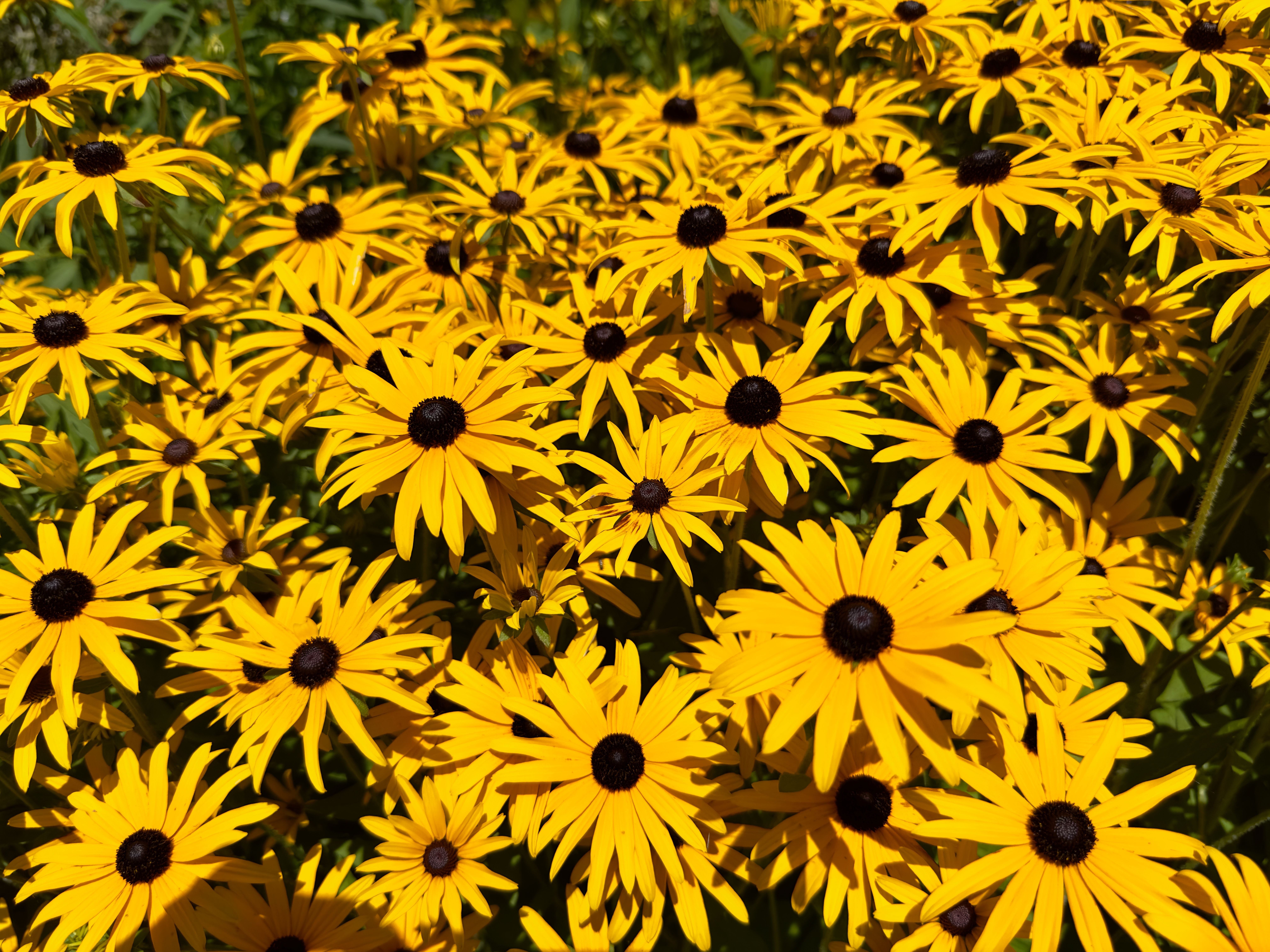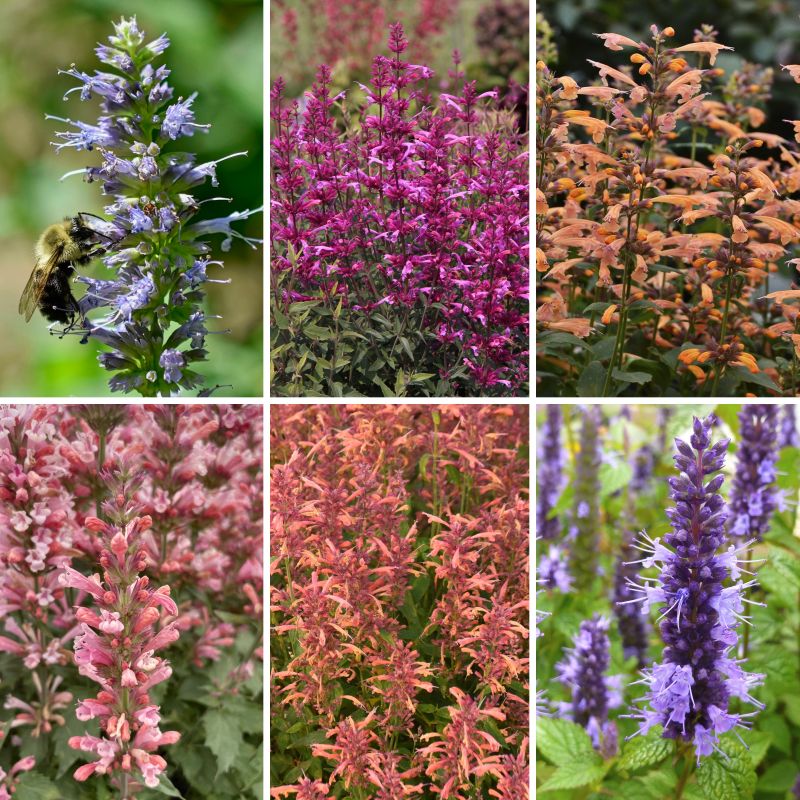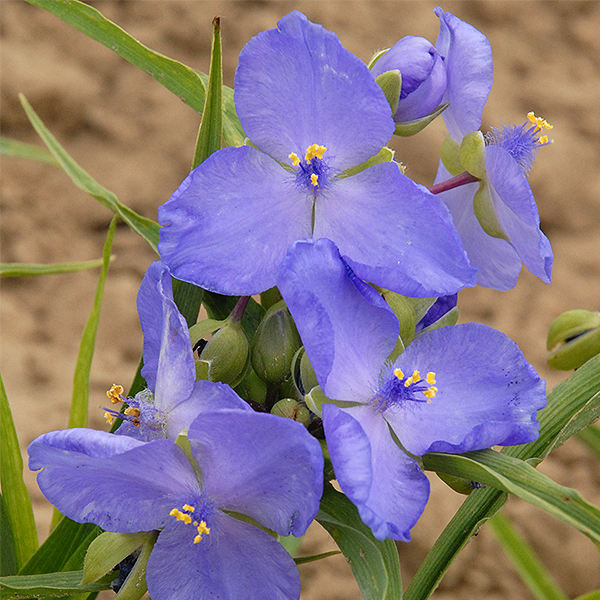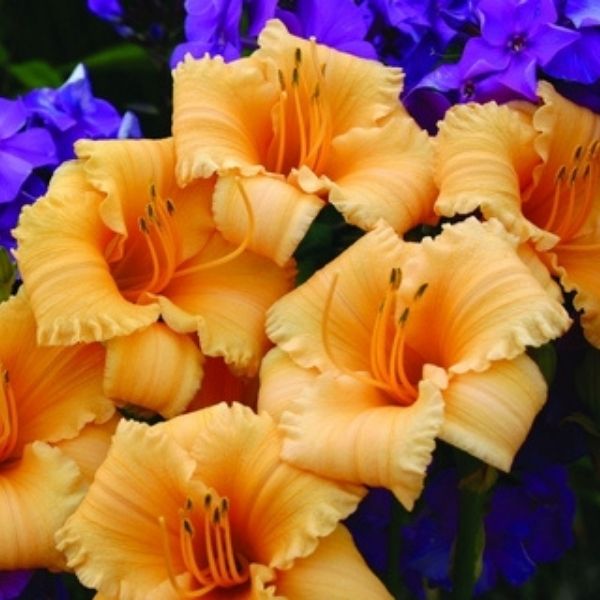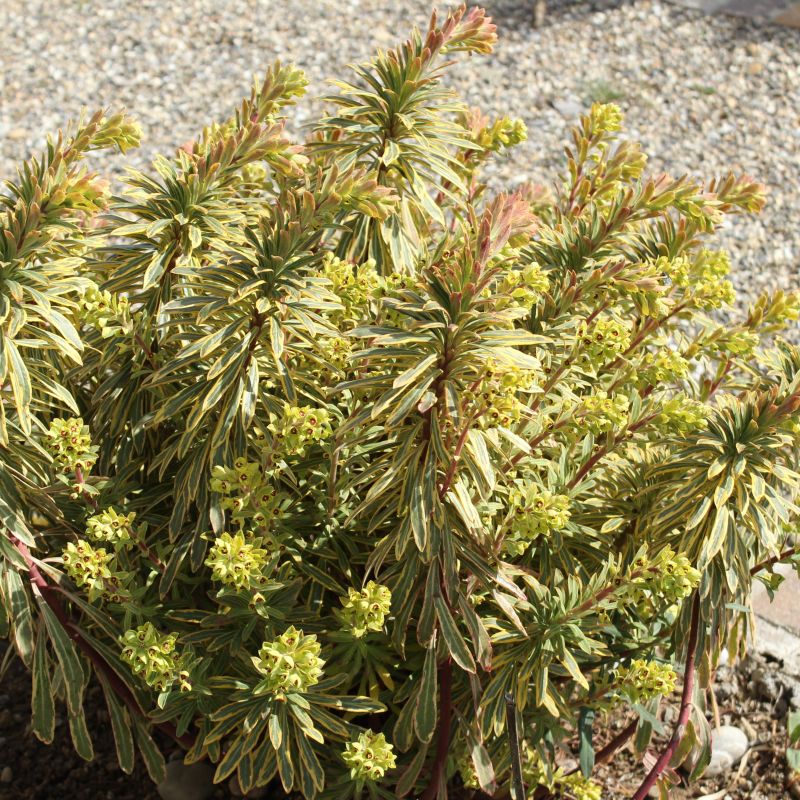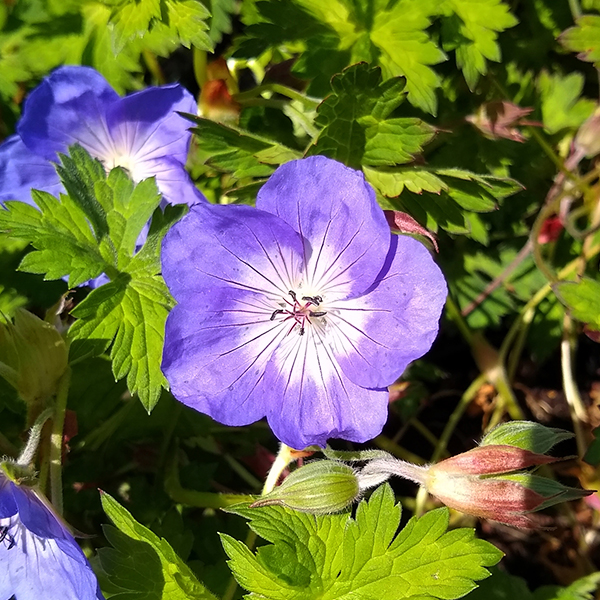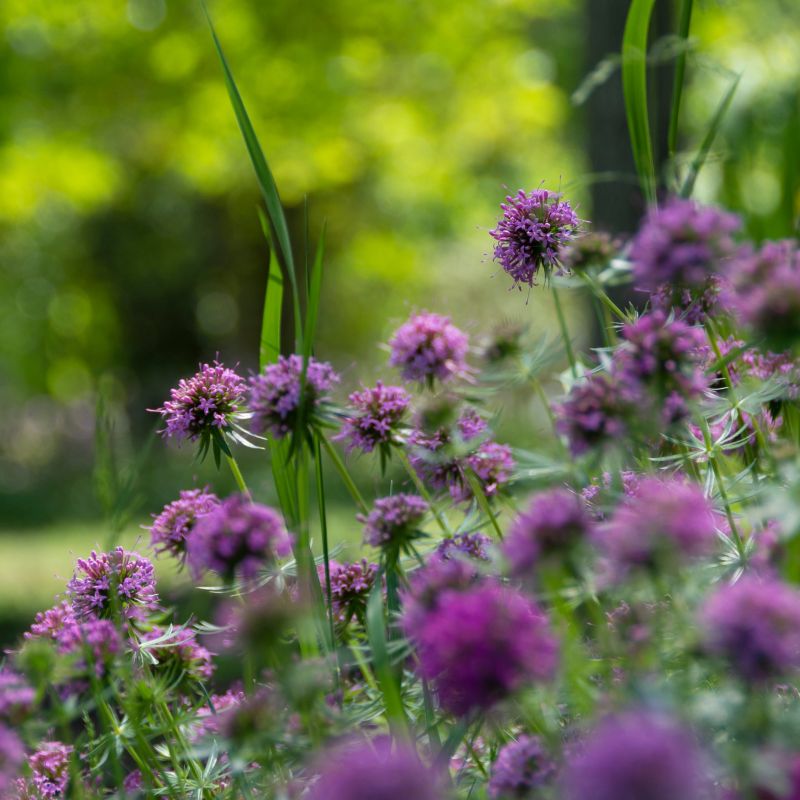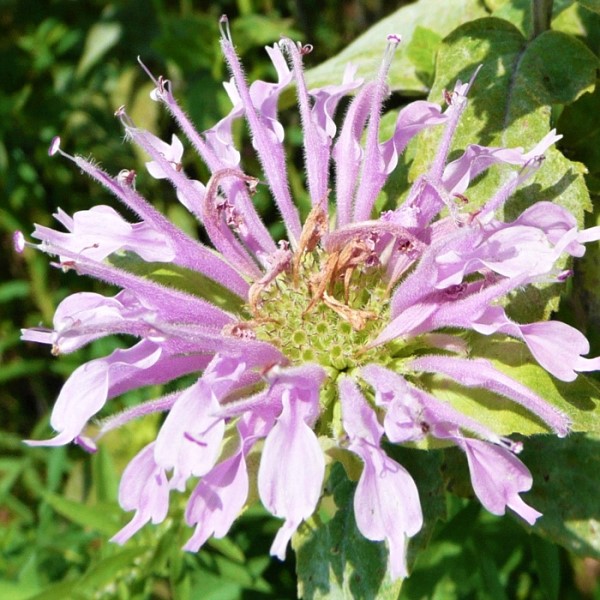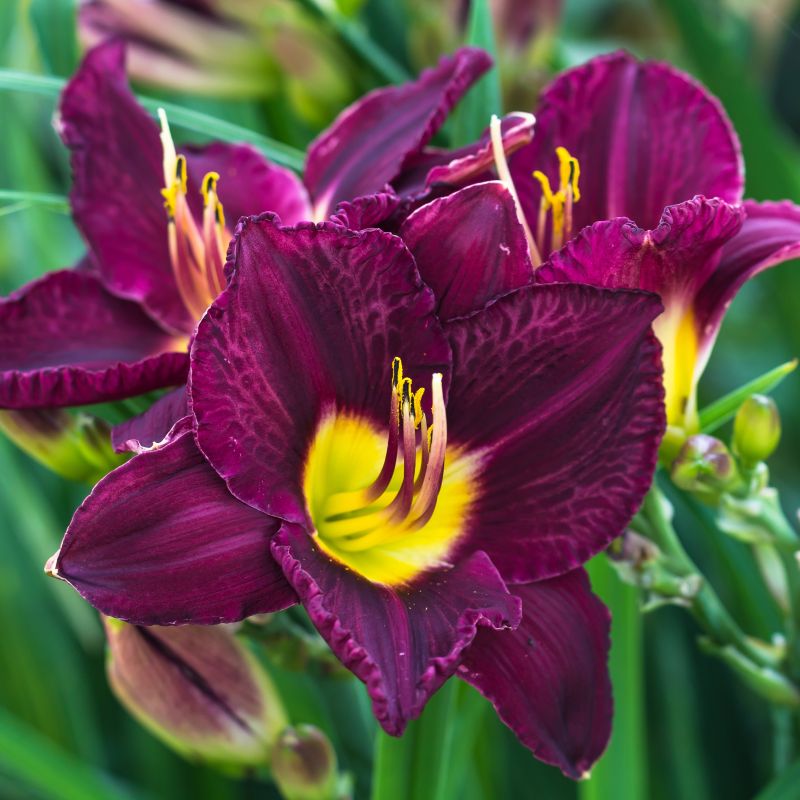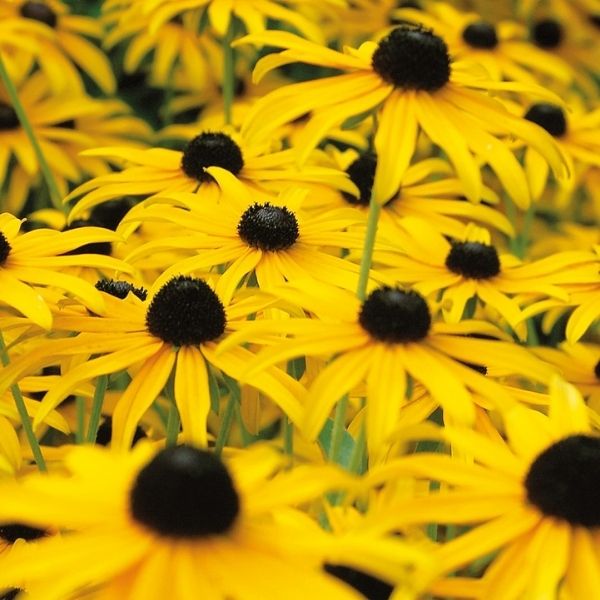
American Gold Rush Black-Eyed Susan
Rudbeckia 'American Gold Rush'
20 reviews
American Gold Rush Black-Eyed Susan
Rudbeckia 'American Gold Rush'
20 reviews
1 Gallon
We are sorry, product is currently out of stock due to seasonal availability. Please check the "Related plants available in your area" section below
Why American Gold Rush Black-Eyed Susan?
The American Gold Rush Black-eyed Susan (Rudbeckia 'American Gold Rush') is a popular choice for gardeners due to its stunning golden-yellow flowers and long bloom time. It attracts butterflies and pollinators and is drought-tolerant, making it a low-maintenance plant. It is a compact variety, reaching about 2 feet in height, making it suitable for smaller gardens and containers. Overall, it adds a bright and cheerful touch to any landscape.
Related plants available in your area
Sunlight
The American Gold Rush Black-eyed Susan requires full sunlight.
Watering
American Gold Rush Black-eyed Susan requires regular watering, keeping the soil consistently moist but not soggy. It is recommended to water the plant deeply once or twice a week, especially during periods of dry weather.
Fertilizing
The fertilizer requirement for American Gold Rush Black-eyed Susan would depend on the soil's fertility. A balanced slow-release fertilizer with a higher phosphorus content can be applied in early spring to promote healthy growth and prolific flowering.
American Gold Rush Black-eyed Susan (Rudbeckia 'American Gold Rush')
The American Gold Rush Black-eyed Susan, scientifically known as Rudbeckia 'American Gold Rush', is a stunning perennial plant that belongs to the Aster family. This variety is prized for its showy, bright yellow flowers with prominent black centers, creating a striking contrast that can instantly grab attention in any garden or landscape.
Features:
- The American Gold Rush Black-eyed Susan boasts a compact growth habit, reaching a height of around 24-30 inches and spreading up to 18-24 inches wide.
- Its black-eyed flowers bloom profusely from early summer through fall, attracting butterflies, bees, and other pollinators to your garden.
- This perennial is known for its exceptional heat and drought tolerance, making it an excellent choice for gardens in hot and dry regions.
- The sturdy stems of the American Gold Rush Black-eyed Susan make it resistant to flopping, even during heavy rains or winds.
- It thrives in full sun to partial shade and adapts well to a wide range of soil types, as long as they are well-drained.
- With its long blooming period and vibrant flowers, this Black-eyed Susan variety is ideal for borders, mass plantings, and containers.
Care and Maintenance:
The American Gold Rush Black-eyed Susan is relatively low maintenance, but a few care tips will ensure its continued success:
- Water the plant regularly during the first growing season to establish a deep and extensive root system.
- Once established, it is quite drought tolerant, so water sparingly, allowing the soil to dry between watering.
- Apply a layer of organic mulch around the base of the plant to conserve moisture and suppress weeds.
- Deadhead spent flowers regularly to encourage continuous blooming and maintain a tidy appearance.
- In colder regions, this perennial may benefit from a layer of winter mulch to protect the roots from extreme temperatures.
- Divide the plant every 3-4 years in early spring to maintain its vigor and promote better flowering.
Planting Location:
Choose a sunny spot in your garden to allow the American Gold Rush Black-eyed Susan to thrive. It prefers well-drained soil but can tolerate a range of soil types. This perennial can be used as a focal point in mixed borders, planted in mass for a bold display, or incorporated into larger landscapes to attract pollinators.
Hardiness:
The American Gold Rush Black-eyed Susan is known for its exceptional hardiness, growing well in USDA hardiness zones 4-9. It can withstand both cold winters and hot summers, making it suitable for a wide range of climates.
Attracting Pollinators:
The brightly colored flowers of the American Gold Rush Black-eyed Susan are highly attractive to pollinators such as butterflies, bees, and hummingbirds. Planting this perennial in your garden will not only create a visually pleasing display but also contribute to the ecological balance by supporting pollinators.
Plant Information:
| Botanical Name: | Rudbeckia 'American Gold Rush' |
| USDA Zones: | 4 - 9 |
| Water: | Moderate to Low Once Established |
| Exposure: | Full Sun |
| Soil Needs: | Well Drained |
| Mature Height: | 22 - 26 inches |
| Mature Spread: | 3 - 4 feet |







Pollination Info
American Gold Rush Black-eyed Susan (Rudbeckia 'American Gold Rush') - Pollination Info
The American Gold Rush Black-eyed Susan (Rudbeckia 'American Gold Rush') is a perennial flower known for its vibrant yellow petals with dark brown centers. It attracts various pollinators and is an essential addition to any pollinator garden. Here is some detailed information about the pollination of this plant:
Pollinators attracted:
- Butterflies: The bright colors and nectar-rich flowers of the American Gold Rush Black-eyed Susan make it highly appealing to butterflies. Species such as Monarchs, Painted Ladies, and Swallowtails are frequent visitors.
- Bees: Different species of bees, including honeybees, bumblebees, and solitary bees, are attracted to the flowers of this Rudbeckia. The bees collect nectar and pollen, contributing to the pollination process.
- Hummingbirds: The tubular shape of the Rudbeckia flowers can also catch the attention of hummingbirds. These birds are attracted to the nectar and help in cross-pollination as they move from flower to flower.
Pollination methods:
The American Gold Rush Black-eyed Susan primarily relies on insect pollinators, such as bees and butterflies, for its pollination. These insects are attracted to the flowers by their bright color and scent.
Flowering season:
The American Gold Rush Black-eyed Susan blooms from mid-summer to early fall. During this period, the flowers are abundant and attract a variety of pollinators to ensure successful pollination.
Suggested companion plants:
To enhance the pollinator-attracting potential of your garden, you can consider planting the American Gold Rush Black-eyed Susan alongside other pollinator-friendly plants such as:
- Purple Coneflower (Echinacea purpurea)
- Mexican Sunflower (Tithonia diversifolia)
- Bee Balm (Monarda)
- Liatris (Blazing Stars)
- Aster
Remember to provide a diverse range of plants with varying bloom times to attract pollinators throughout the season.
FAQ
American Gold Rush Black-eyed Susan (Rudbeckia 'American Gold Rush') - FAQ
1. What is American Gold Rush Black-eyed Susan?
American Gold Rush Black-eyed Susan, scientifically known as Rudbeckia 'American Gold Rush', is a perennial flowering plant native to North America. It is a cultivar of the standard black-eyed Susan and is characterized by its bright yellow-gold petals and captivating dark brown center.
2. What are the main features of American Gold Rush Black-eyed Susan?
Some of the key features of the American Gold Rush Black-eyed Susan include:
- Abundant yellow-gold flowers with dark brown centers
- Compact and upright growth habit
- Long blooming period, from mid-summer to fall
- Drought-tolerant once established
- Attracts butterflies and other pollinators
- Ideal for borders, beds, containers, and cutting gardens
3. How tall and wide does American Gold Rush Black-Eyed Susan grow?
American Gold Rush Black-eyed Susan typically grows to a height of 2 to 2.5 feet (60-75 cm) and spreads about 1 to 1.5 feet (30-45 cm) wide. Its compact growth habit makes it suitable for smaller gardens and containers.
4. How is American Gold Rush Black-eyed Susan planted?
To plant American Gold Rush Black-eyed Susan:
- Choose a well-draining location with full sun to partial shade.
- Dig a hole that is slightly larger than the root ball of the plant.
- Place the plant in the hole, ensuring the top of the root ball is level with or slightly above the soil surface.
- Backfill the hole with soil and gently firm it around the plant.
- Water thoroughly after planting to settle the soil.
5. How often should American Gold Rush Black-eyed Susan be watered?
American Gold Rush Black-Eyed Susan is drought-tolerant once established, but it benefits from regular watering during its first growing season. Provide about 1 inch (2.5 cm) of water per week, either through rainfall or supplemental irrigation. Avoid overwatering, as it can lead to root rot.
6. How should American Gold Rush Black-eyed Susan be fertilized?
Apply a balanced, slow-release fertilizer in early spring when new growth appears. Follow the manufacturer's instructions for the appropriate dosage based on your soil conditions. Avoid excessive fertilization, as it can result in leggy growth.
7. How do you deadhead American Gold Rush Black-eyed Susan?
To deadhead American Gold Rush Black-eyed Susan:
- Remove faded or spent flowers by cutting the stem just above a healthy leaf node or bud.
- This promotes further blooming and prevents self-seeding.
- Alternatively, you can leave the seedheads intact if you want to attract birds to your garden during winter.
8. How do you divide American Gold Rush Black-eyed Susan?
American Gold Rush Black-eyed Susan can be divided every 3-5 years to maintain its vigor. To divide the plant:
- In early spring or fall, dig up the entire plant using a garden fork.
- Gently separate the clumps into smaller sections, ensuring each new division has roots and healthy shoots.
- Replant the divisions in prepared soil at the same depth as the original plant.
- Water thoroughly after transplanting to encourage root establishment.
9. How should American Gold Rush Black-eyed Susan be protected from pests and diseases?
American Gold Rush Black-eyed Susan is relatively resistant to most pests and diseases. However, occasional issues with powdery mildew, leaf spot, or aphids may occur. To prevent and manage these problems:
- Avoid overhead watering, as it can encourage disease development.
- Ensure good air circulation around the plants by planting them with sufficient spacing.
- If necessary, treat affected plants with appropriate organic or chemical controls, following the product instructions.
10. When is the best time to plant American Gold Rush Black-eyed Susan?
American Gold Rush Black-eyed Susan can be planted either in spring after the danger of frost has passed or in fall, well before the ground freezes. These times allow the plant to establish its root system before the extremes of summer heat or winter cold.
Planting & Care
Planting & Care for American Gold Rush Black-eyed Susan (Rudbeckia 'American Gold Rush')
The American Gold Rush Black-eyed Susan, scientifically known as Rudbeckia 'American Gold Rush,' is a perennial flowering plant that boasts stunning yellow flowers with dark brown centers. This variety is known for its compact growth habit and extended bloom time, making it a favorite among gardeners.
Planting
- Sunlight: Choose a location that receives full sun for at least 6 hours a day. Black-eyed Susans thrive in sunny conditions.
- Soil: They prefer well-draining soil that is fertile and moderately rich in organic matter. The pH level should be between 6.0 and 7.5.
- Spacing: Plant Rudbeckia 'American Gold Rush' about 18-24 inches apart, allowing enough space for them to spread as they grow.
- Planting: Dig a hole that is twice the size of the root ball. Place the plant in the hole, ensuring that the top of the root ball is level with the soil surface. Backfill the hole and gently firm the soil around the plant.
- Watering: After planting, water the Black-eyed Susans thoroughly and regularly to help establish their roots. Once established, they are moderately drought-tolerant but still require occasional watering during dry periods.
Care
- Pruning: Deadhead spent flowers regularly to promote continuous blooming and prevent self-seeding. Additionally, cutting back the plant to around 6 inches in late winter or early spring helps maintain its compact form.
- Fertilizer: Apply a balanced slow-release fertilizer in spring when new growth appears. Follow the package instructions for proper dosage.
- Mulching: Apply a layer of organic mulch around the plants, but keep it a few inches away from the stems to avoid excess moisture and potential rot.
- Support: Although Rudbeckia 'American Gold Rush' has a sturdy growth habit, you may provide support, such as stakes or a trellis, if you anticipate heavy rainfall or strong winds that may cause them to flop.
- Dividing: Every few years, divide the clumps in early spring to maintain their vigor and prevent overcrowding. Dig up the clumps, separate them, and replant them in the desired locations.
By following these planting and care guidelines, your American Gold Rush Black-eyed Susan will thrive and provide you with beautiful golden-yellow blooms throughout the growing season.
Check Out These Verified Customer Reviews:
Customer Reviews
4.7 out of 5 based on 20 reviews
Thank you! Your review has been submitted.
Quality flowers, fast shipping.
Excellent quality and great value for the price. Arrived in perfect condition, very happy with my purchase.
Only reason for not giving 5 stars is that there was a slight delay in delivery. Still, very happy with my order.
Item has been added to your cart.




